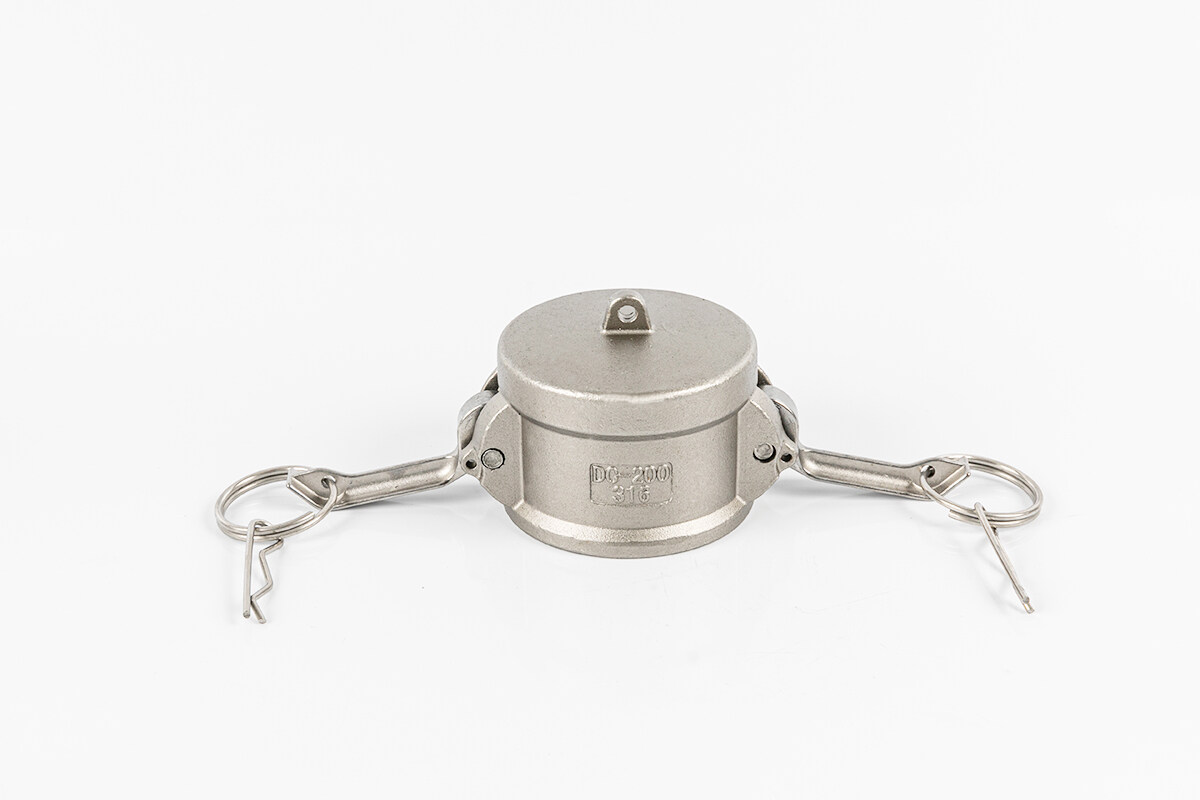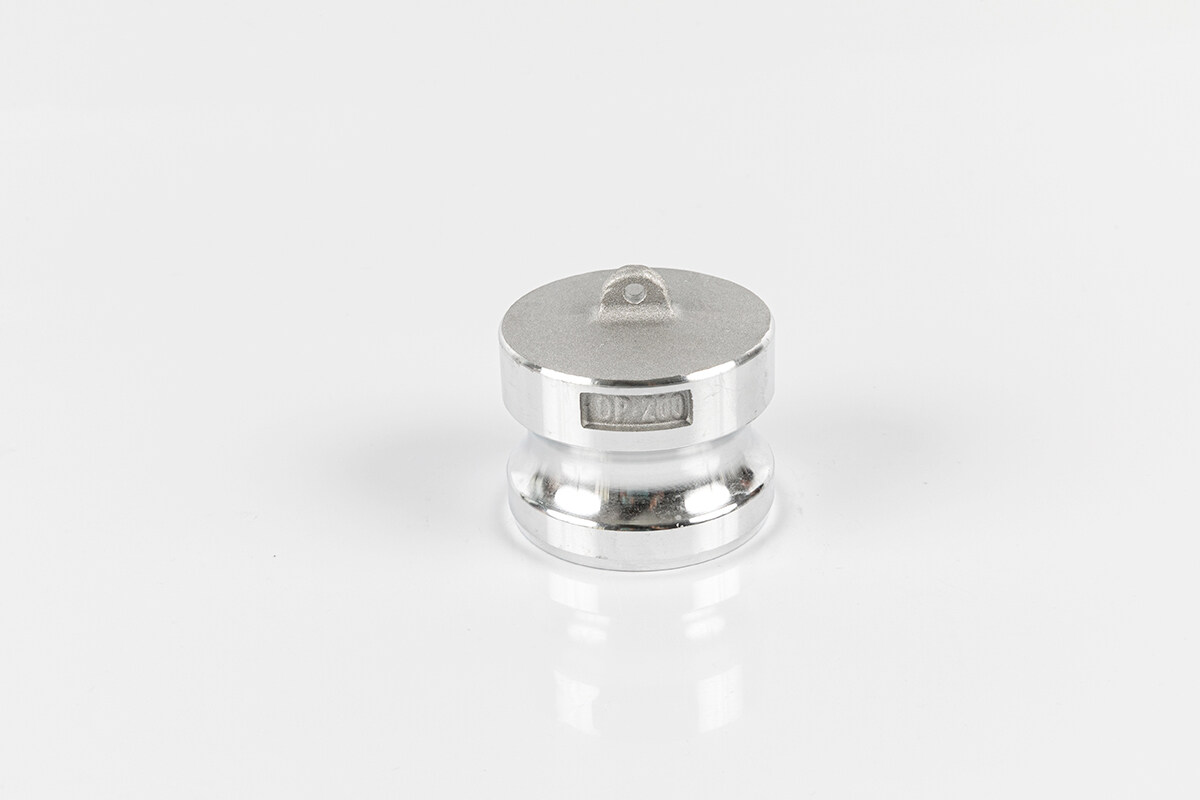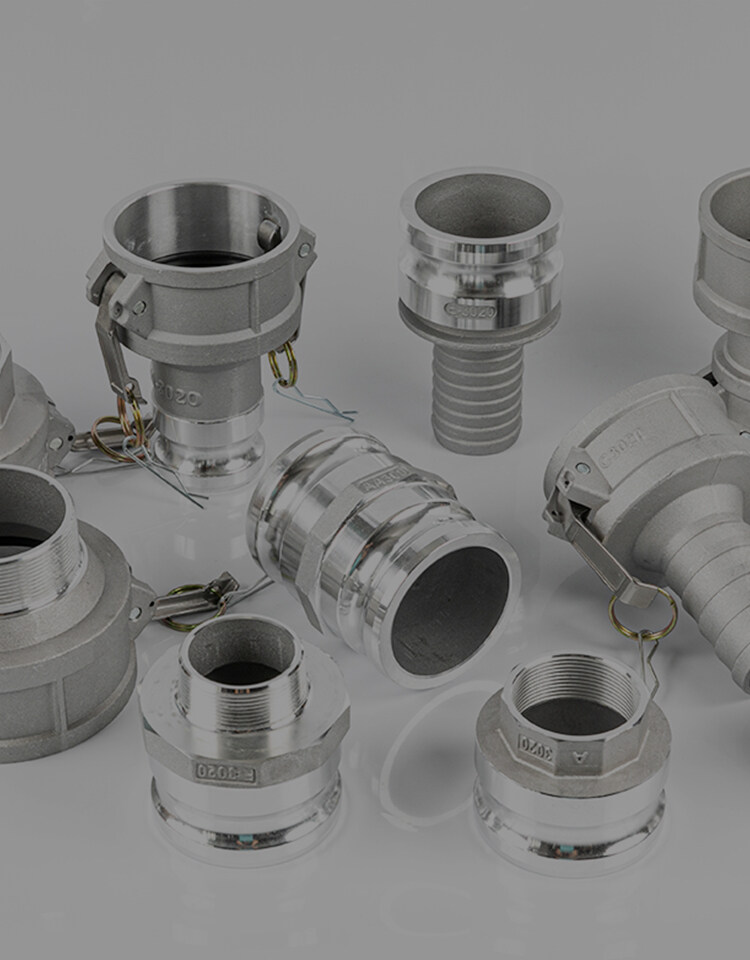Error de formato de correo electrónico
emailCannotEmpty
emailDoesExist
pwdLetterLimtTip
inconsistentPwd
pwdLetterLimtTip
inconsistentPwd

Noticias
Aquí, puedes describir un texto que quieres expresar

Camlock Coupling: The Versatile Solution for Fluid Transfer
Fluid transfer is a critical aspect of various industries, including manufacturing, agriculture, and firefighting. To ensure efficient and secure fluid transfer, the use of reliable and versatile couplings is essential. One such coupling that has gained immense popularity is the Camlock Coupling. In this blog post, we will explore the features, applications, and benefits of Camlock Couplings, along with a detailed discussion of its various types, including SS Camlock Coupling, Camlock Male Threaded Coupling, Stainless Camlock Fittings, and Fire Hose Camlock Couplings.
Understanding Camlock Couplings
1.1 What are Camlock Couplings?
Camlock Couplings, also known as Cam and Groove Couplings, are quick-connect couplings used for fluid transfer. They consist of two parts - a male adapter (also called the “cam”) and a female coupler (also called the “groove”). These parts are designed to fit together securely and create a leak-proof connection.
1.2 How do Camlock Couplings work?
The working principle of Camlock Couplings is simple yet effective. The male adapter has a cam arm that is pulled back to open the coupler’s arms. The female coupler has a groove that aligns with the cam arm. When the male adapter is inserted into the female coupler, the cam arm is released, and the arms of the coupler close around the adapter, creating a tight seal.
1.3 Key components of a Camlock Coupling
A Camlock Coupling consists of several key components:
Body: The main part of the coupling that houses the cam arm and the coupler arms.
Cam arm: The part of the male adapter that engages with the coupler arms to create a secure connection.
Coupler arms: The arms of the female coupler that close around the male adapter to form a tight seal.
Gasket: A rubber or elastomeric ring placed inside the coupler to provide a leak-proof seal.
Handles: The handles on the cam arm and the coupler arms that allow for easy operation and connection.
Features and Benefits of Camlock Couplings
2.1 Quick and Easy Connection
One of the primary advantages of Camlock Couplings is their quick and easy connection. The cam arm and coupler arms can be engaged or disengaged with minimal effort, allowing for rapid assembly and disassembly. This feature is particularly beneficial in applications where frequent connection and disconnection are required.
2.2 Versatility in Fluid Transfer
Camlock Couplings are highly versatile and can be used for a wide range of fluids, including liquids, gases, and powders. They are commonly used in industries such as oil and gas, chemical processing, food and beverage, and pharmaceuticals. The ability to handle different types of fluids makes Camlock Couplings a preferred choice for many applications.
2.3 Secure and Leak-proof Connection
The design of Camlock Couplings ensures a secure and leak-proof connection. The cam arm and coupler arms create a tight seal, preventing any leakage during fluid transfer. The use of gaskets further enhances the sealing capability, ensuring a reliable connection even under high pressure or temperature conditions.
2.4 Durability and Longevity
Camlock Couplings are built to withstand demanding industrial environments. They are typically made from durable materials such as stainless steel, aluminum, or brass, which offer excellent resistance to corrosion, abrasion, and chemical exposure. This durability ensures a long service life, reducing the need for frequent replacements.
2.5 Compatibility with Various Materials
Camlock Couplings are compatible with a wide range of materials, including metals, plastics, and rubber. This compatibility allows for easy integration with existing equipment and systems. Whether it is connecting hoses, pipes, or tanks, Camlock Couplings provide a reliable and versatile solution.
2.6 Cost-effectiveness
Camlock Couplings offer a cost-effective solution for fluid transfer. Their ease of use, durability, and compatibility with different materials contribute to reduced downtime, increased productivity, and lower maintenance costs. Additionally, the ability to quickly connect and disconnect components saves valuable time and labor.
Types of Camlock Couplings
3.1 SS Camlock Coupling
SS Camlock Couplings, also known as Stainless Steel Camlock Couplings, are specifically designed for applications that require high corrosion resistance and hygiene standards. These couplings are made from stainless steel, which offers excellent resistance to rust, chemicals, and extreme temperatures.
3.1.1 Advantages of SS Camlock Coupling
Superior corrosion resistance: Stainless steel is highly resistant to corrosion, making SS Camlock Couplings suitable for use in corrosive environments.
Hygienic design: The smooth surface of stainless steel prevents the accumulation of bacteria, making SS Camlock Couplings ideal for food and pharmaceutical applications.
High strength and durability: Stainless steel provides excellent strength and durability, ensuring a long service life even in demanding conditions.
3.1.2 Applications of SS Camlock Coupling
SS Camlock Couplings find applications in industries such as food and beverage, pharmaceuticals, chemical processing, and marine. They are commonly used for transferring corrosive fluids, food products, and pharmaceutical ingredients.
3.2 Camlock Male Threaded Coupling
Camlock Male Threaded Couplings are designed with male threads on the adapter, allowing for direct connection to threaded pipes, hoses, or equipment. These couplings eliminate the need for additional fittings or adapters, simplifying the fluid transfer process.
3.2.1 Benefits of Camlock Male Threaded Coupling
Easy installation: The threaded design of the male adapter allows for easy installation onto threaded pipes or equipment.
Versatility: Camlock Male Threaded Couplings can be used in various applications where threaded connections are required.
Time and cost savings: By eliminating the need for additional fittings or adapters, Camlock Male Threaded Couplings save time and reduce costs.
3.2.2 Common Applications of Camlock Male Threaded Coupling
Camlock Male Threaded Couplings are commonly used in industries such as plumbing, irrigation, firefighting, and construction. They are suitable for connecting hoses, pipes, and equipment with threaded connections.
3.3 Stainless Camlock Fittings
Stainless Camlock Fittings are a type of Camlock Coupling made entirely from stainless steel. These fittings offer the same benefits as SS Camlock Couplings, including corrosion resistance, hygiene standards, and durability. However, they are designed to be used as standalone fittings rather than a complete coupling set.
3.3.1 Features of Stainless Camlock Fittings
All-stainless steel construction: Stainless Camlock Fittings are made entirely from stainless steel, providing superior corrosion resistance and durability.
Wide range of sizes and configurations: Stainless Camlock Fittings are available in various sizes and configurations to accommodate different fluid transfer requirements.
Easy integration: These fittings can be easily integrated into existing systems or used as standalone components.
3.3.2 Industries that Benefit from Stainless Camlock Fittings
Stainless Camlock Fittings find applications in industries such as oil and gas, chemical processing, food and beverage, and pharmaceuticals. They are commonly used for connecting hoses, pipes, tanks, and other equipment.
3.4 Fire Hose Camlock Couplings
Fire Hose Camlock Couplings, also known as Fire Fittings, are specifically designed for firefighting applications. These couplings provide a quick and secure connection between fire hoses and firefighting equipment, ensuring efficient water flow during emergencies.
3.4.1 Importance of Fire Hose Camlock Couplings
Rapid deployment: Fire Hose Camlock Couplings allow for quick and easy connection of fire hoses to firefighting equipment, enabling rapid deployment during emergencies.
Secure connection: The cam arm and coupler arms of Fire Hose Camlock Couplings create a secure connection that can withstand high water pressure.
Compatibility: Fire Hose Camlock Couplings are compatible with standard fire hoses and firefighting equipment, ensuring seamless integration.
3.4.2 Key Features of Fire Hose Camlock Couplings
Lightweight and durable: Fire Hose Camlock Couplings are typically made from lightweight yet durable materials such as aluminum or brass, ensuring ease of handling and long-lasting performance.
Corrosion resistance: These couplings are designed to withstand exposure to water, chemicals, and harsh environments, offering excellent corrosion resistance.
Safety features: Fire Hose Camlock Couplings often include safety features such as locking mechanisms or safety pins to prevent accidental disconnection during firefighting operations.
Choosing the Right Camlock Coupling
4.1 Factors to Consider
When choosing a Camlock Coupling, several factors should be considered:
Fluid compatibility: Ensure that the coupling material is compatible with the fluid being transferred to prevent chemical reactions or contamination.
Pressure and temperature requirements: Select a coupling that can withstand the pressure and temperature conditions of the application.
Size and configuration: Choose a coupling size and configuration that matches the hoses, pipes, or equipment being connected.
Environmental conditions: Consider the environmental conditions, such as exposure to chemicals, UV radiation, or extreme temperatures, and select a coupling material that can withstand these conditions.
4.2 Proper Sizing and Material Selection
Proper sizing and material selection are crucial for the optimal performance of Camlock Couplings. The coupling size should match the diameter of the hoses or pipes being connected to ensure a secure and leak-proof connection. Additionally, the material selection should consider factors such as fluid compatibility, corrosion resistance, and durability.
4.3 Safety Considerations
Safety should always be a top priority when using Camlock Couplings. Ensure that the couplings are properly installed and secured to prevent accidental disconnection. Regular inspection and maintenance should be conducted to identify any signs of wear, damage, or leakage. It is also important to follow industry standards and guidelines for the safe use of Camlock Couplings.
Maintenance and Care of Camlock Couplings
5.1 Cleaning and Inspection
Regular cleaning and inspection are essential for maintaining the performance and longevity of Camlock Couplings. After each use, the couplings should be thoroughly cleaned to remove any debris, dirt, or contaminants. Inspect the couplings for signs of wear, damage, or leakage, and replace any worn-out or damaged components.
5.2 Lubrication and Storage
Applying a lubricant to the cam arm and coupler arms can help ensure smooth operation and prevent corrosion. Use a lubricant that is compatible with the coupling material and the fluid being transferred. When not in use, store the couplings in a clean and dry environment to prevent moisture buildup and corrosion.
5.3 Common Troubleshooting Tips
If any issues arise with Camlock Couplings, the following troubleshooting tips may help:
Leakage: Check for any loose connections or damaged gaskets and replace them if necessary. Ensure that the couplings are properly engaged and tightened.
Difficult connection: Clean the couplings and lubricate the cam arm and coupler arms to ensure smooth operation. Check for any debris or obstructions that may hinder the connection.
Corrosion: If corrosion is observed, clean the affected areas and apply an appropriate corrosion-resistant coating or lubricant. Consider using couplings made from materials with higher corrosion resistance.
Conclusion
In conclusion, Camlock Couplings offer a versatile and reliable solution for fluid transfer in various industries. Their quick and easy connection, compatibility with different materials, and secure leak-proof design make them a preferred choice for many applications. Whether it is the SS Camlock Coupling, Camlock Male Threaded Coupling, Stainless Camlock Fittings, or Fire Hose Camlock Couplings, each type has its unique features and benefits. By understanding the different types and considering the factors mentioned, one can choose the right Camlock Coupling for their specific needs. Regular maintenance and care ensure the longevity and optimal performance of these couplings. Embracing the efficiency and convenience of Camlock Couplings can significantly enhance fluid transfer operations, leading to improved productivity and cost-effectiveness.

